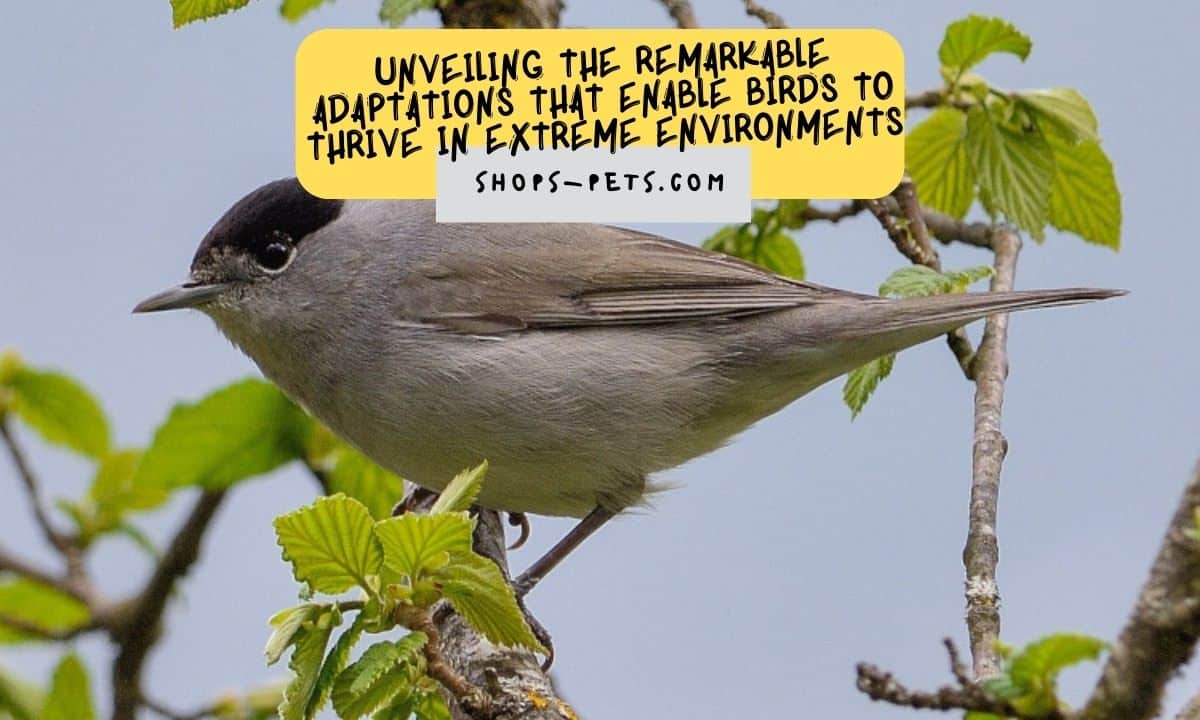Unveiling the Remarkable Adaptations That Enable Birds to Thrive in Extreme Environments
In the vast and diverse tapestry of the natural world, few creatures capture our imagination and admiration quite like birds. These remarkable avian wonders are found in every corner of the Earth, from the icy tundras of the Arctic to the scorching deserts of the Sahara. The ability of birds to not only survive but thrive in such extreme environments is a testament to the extraordinary adaptations they’ve developed over millennia.
In this article, we delve into the fascinating world of avian adaptations, unveiling the secrets that enable birds to conquer the harshest of habitats.
1. Mastery of Thermoregulation
Surviving the Arctic Extremes: Birds that inhabit the frigid Arctic regions face an environment where temperatures can plummet to bone-chilling lows. One of the most remarkable adaptations in this context is countercurrent heat exchange. In the legs of Arctic birds, warm arterial blood flows in close proximity to cold venous blood. This ingenious system ensures that heat is conserved and prevents the extremities from freezing.
Thriving in the Desert Heat: Conversely, in scorching deserts, thermoregulation is equally vital. Birds in these arid landscapes, such as the Desert Lark, have evolved efficient ways to dissipate heat. They often have featherless legs to release excess warmth, and they may reduce their activity during the hottest parts of the day to conserve energy.
2. Efficient Water Management
Surviving the Arid Plains: In arid environments, where water is scarce and precious, birds have evolved ingenious ways to minimize water loss. Some, like the Sandgrouse, have specialized feathers that can soak up water like a sponge, allowing them to carry it back to their chicks. Others, such as the Desert Sparrow, can excrete highly concentrated urine to retain as much water as possible.
3. Specialized Beak Shapes
Adapting to Varied Diets: Birds exhibit a vast array of beak shapes and sizes, each adapted to their specific dietary needs. From the long, probing beaks of hummingbirds for sipping nectar to the strong, hooked beaks of raptors for tearing flesh, the variety of beak adaptations is staggering. These specialized tools enable birds to efficiently obtain their required nourishment.
4. Enhanced Oxygen Utilization
Breathing at High Altitudes: In high-altitude environments, where oxygen is scarce, birds like the Bar-headed Goose have developed highly efficient respiratory systems. Their lungs and circulatory systems are adapted to extract the maximum oxygen from the thin air, allowing them to fly over the world’s tallest peaks, including Mount Everest.
5. Navigational Genius
Migratory Marvels: Migration is one of the most awe-inspiring phenomena in the avian world. Birds like the Arctic Tern embark on epic journeys covering thousands of miles. They possess an astonishing ability to navigate, often relying on a combination of visual cues, Earth’s magnetic field, and celestial bodies. The precision of their navigational skills is nothing short of miraculous.
6. Camouflage and Concealment
Blending into the Environment: In a world where predators lurk at every corner, camouflage is a matter of life and death. Birds like the Ptarmigan, which inhabit the snowy landscapes of the Arctic, change the color of their feathers with the seasons to blend seamlessly into their surroundings. This remarkable adaptation helps them evade the keen eyes of predators.
7. Enhanced Vision and Hearing
Acute Senses: Many birds possess extraordinary vision and hearing capabilities. Raptors, such as eagles and hawks, have exceptionally keen eyesight that allows them to spot prey from high in the sky. Owls, on the other hand, have exceptional night vision and the ability to hunt in complete darkness.
8. Resilience to Harsh Conditions
Battling the Elements: Extreme environments often subject birds to harsh weather conditions. Some, like the Emperor Penguin, endure prolonged Antarctic winters by huddling together in tightly packed groups to conserve heat. Their resilience in the face of adversity is nothing short of astounding.
9. Extraordinary Reproductive Strategies
Survival of the Chicks: Birds in extreme environments must adopt unique reproductive strategies. For instance, penguins lay their eggs on the ice, where they incubate them on their feet to protect them from the cold ground. Other birds like the Snowy Owl may produce more eggs during times of plenty, ensuring the survival of their offspring.
The Astonishing World of Avian Adaptations
Birds, with their diverse adaptations and incredible resilience, continue to captivate our imagination. From the frigid Arctic to the scorching desert, and from the highest peaks to the deepest jungles, these remarkable creatures demonstrate the unparalleled beauty of adaptation in the natural world. Their ability to thrive in the harshest of environments serves as a testament to the wonders of evolution and the remarkable capabilities of our feathered friends.
